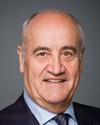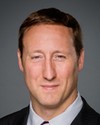Mr. Speaker, I appreciate the opportunity to express our strong feelings as members of the Liberal Party on the occasion of the diamond jubilee celebrations of the reign of Queen Elizabeth II.
Like the Minister of Citizenship, Immigration and Multiculturalism, I was also combing through the debates of the past. It is an interesting contrast. The expression of congratulations to Queen Victoria in 1897 on the occasion of the 60th anniversary of her reign was, of course, proposed by the Prime Minister of the day, who was Sir Wilfrid Laurier, to a packed house. The motion was seconded Sir Charles Tupper, the leader of the official opposition.
As the leader of the Liberal Party today, it is a great honour for me to be able to participate in this, not debate, but this discussion and this motion. I think it is important for us to use this occasion to reflect, not simply on this day, on this weekend, where many of us have seen the celebrations that have been taking place, but also for us to be reflecting, as well, on the significance of her reign over 60 years and for us to be reflecting on the achievements of those 60 years and the impact they have had on our own country, Canada.
It is an honour for me to speak about this historic event—the Queen's celebration of the 60th anniversary of the start of her reign—but at the same time to reflect a bit on the importance of the principles of the constitutional monarchy from which we have benefited over the years.
I think it is important for us to reflect on the significance of her reign and her understanding of Canada and the role she has played not only in the evolution of our own country but also in the evolution of the British Commonwealth.
We can all remember. I suppose we cannot all remember, but some of us can. Certainly I can remember going to school in the 1950s, soon after her taking on the responsibilities as monarch, and looking at a map of the world on the wall. Of course the map on the wall in the 1950s would be coloured with different colours for different countries.
There was this huge pink space covering so many parts of the globe. India, which was at one time called the jewel of the empire, received its independence in 1948 prior to Queen Elizabeth's assuming her responsibilities. It is also fair to say that certainly, for most of Africa, parts of Asia and for great parts of the world, the world was still an imperial and colonial place.
The world was also divided between east and west by what Winston Churchill, in his famous speech at Fulton in 1946, described as an iron curtain, which went from the Baltic to the Adriatic.
Growing up at that time, there seemed to be certain things that would never change. One of them, of course, was the fact that the world was divided between the communist and non-communist worlds. The second was that the colonial and imperial world was changing, but there were some bastions in that world, like South Africa, which would always be divided and always be ruled by a racial minority.
What we have seen through her long reign is that Queen Elizabeth has in fact not only presided over her country, her many countries of Canada and Australia and elsewhere, where she is recognized not only as the head of the Commonwealth but also as Queen of the country, but she also presided over an extraordinary transformation.
The first great transformation was the transformation from empire to commonwealth. It had its roots, as the Minister of Citizenship, Immigration and Multiculturalism has said, in the Statute of Westminster in 1930-31 when Canada assumed far more responsibilities for its self-government. It took a huge transformation of the world to go from a world where Britain was at the centre of an empire, where the sun literally never set, to the point where Britain was one country among many equals participating in the Commonwealth of Nations.
For those of us who have been students of British constitutional history, it really should have come as no surprise that the monarchy was quite able to make this adjustment from being an active political head of state to being more of a ceremonial head who presides over an extraordinarily diverse and democratic polity. It has been done with grace, distinction, understanding and intelligence, without condescension and rancour, and with a great deal of humanity and compassion.
Those of us who have watched the Queen when she has come to Canada and those of us who have had an opportunity to meet her and speak with her and the members of her family have always been struck, certainly I have, by the enormous sense of intelligent engagement, great affection and deep knowledge that Her Majesty has for this country, the political changes that are under way in this country, and all of the ramifications and meanings.
My colleague, the member for Wascana, was reminding me of this when he told me about a visit that the Queen had made to Regina in 2003. When the Queen visited the University of Regina, she dedicated the opening of the First Nations University and laid a stone tablet in the building. This is what she said at that time:
This stone was taken from the grounds of Balmoral Castle in the Highlands of Scotland—a place dear to my great great grandmother, Queen Victoria. It symbolizes the foundation of the rights of First Nations peoples reflected in treaties signed with the Crown during her reign.
Bearing the cipher of Queen Victoria as well as my own, this stone is presented to the First Nations University of Canada in the hope that it will serve as a reminder of the special relationship between the Sovereign and all First Nations peoples.
Those of us who are familiar with the law of aboriginal peoples will know that of all the relationships that are cherished by the first nations people of Canada, it is the relationship with the Crown which is perhaps most important because that is a relationship of equals. It is a relationship of nations, between sovereign people and based on respect. When we look at the great historical proclamation of 1763, we realize to what extent many of the historic rights and freedoms which all Canadians have and value do not come against the opposition of the Crown, do not come by fighting against a tyrannical monarchy, but, rather, come because the monarchy has had the good and common sense to recognize those rights and lay them out in our law.
I have the comments made by my friend, the member for Wascana, and they are very helpful. In Regina, in 1973, in talking about Canada, the Queen stated the following:
Canada asks no citizens to deny their forebears, to forsake their inheritance—only that each should accept and value the cultural freedom of others as he enjoys his own. It is a gentle invitation, this call to citizenship.
What wonderful words those are, “a gentle invitation”. She has described in those words something of what we see as great in our own country, its sense of civility, its sense not simply of tolerance but of celebration of difference and, at the same time, our deep understanding that unity has to mean something as well.
I think all Canadians took enormous pride, certainly I do, and I know it was a moment of great importance in the history of our country when Queen Elizabeth was present for the signing of the Charter of Rights of Freedoms and for the patriation of the Constitution of Canada, an important moment because it was a constitutional moment. It was a moment in which we reflected on where we had been before and where we would go in the future.
When one looks at all of the polling information, all of the reflections, the public opinion that one can see, it is very clear in all of that, that if there is one central document in which Canadians take pride, if there is one central moment of which Canadians of all backgrounds are proud, it is the moment of patriation and it is the Charter of Rights and Freedoms.
If we look at all of the polls that have been conducted in Quebec and across Canada, we see that Canadians are proud of two things: that the Constitution is now Canadian, thanks to its repatriation; and that a charter of rights is enshrined in the Constitution. What we must understand is the importance of our relationship with the constitutional monarchy represented by Her Majesty the Queen.
At the beginning of my speech I said that, in 1897, we had celebrations similar to those that will be held on the weekend, but they were to celebrate the reign of another queen—Queen Victoria.
Naturally, I was very happy that the Minister of Citizenship, Immigration and Multiculturalism quoted the important words of Sir Wilfrid Laurier at the time of Queen Victoria's death.
I would like to share another important quote that ties into today's celebration.
In the debate on June 2, 1897, we have a little bit of a sense of our connection with today, June 4, 2012, what did Wilfrid Laurier say when he was talking of Queen Victoria? He said:
...above all this there has been the personality of the sovereign herself. The personality of the sovereign herself has been high in everything that has tended to cultivate and adorn her reign.
...in public life, though she has been a constitutional sovereign in every sense of the term, yet it is known that on more than one occasion she has exerted a personal influence in unravelling difficulties and in carrying the nation successfully through troubled periods.
Perhaps one of her chief glories, perhaps the chiefest of all her glories, is that in so far as she has been a sovereign she has been in every sense a model constitutional sovereign.
For us Canadians, one thing which we cannot forget is that under her reign we have obtained the inestimable benefit of responsible government. It is as dutiful subjects that we approach her on this occasion and not as sycophants; but it is our pride to give her upon this occasion the allegiance, the willing allegiance, of free men.
I think those words, with a couple of perhaps small amendments that one has to make because of the changing circumstances of our time and the dramatic revolutions of equality that have taken place in our own country, one could cite exactly these words and apply them directly to Queen Elizabeth.
Just as we now speak of the Victoria era and of Victorian times, I think we all recognize that in these last 60 years we have seen a new Elizabethan era, an era in which rights around the world have literally exploded.
There has been violence, yes, but it is because of the principles of constitutionalism, because of the principles of tolerance and of respect and of understanding the tides and the winds of change that the monarchy has been able to preside over these dramatic changes. These changes have produced great improvements in the life of hundreds of millions of people, which has meant that hundreds of millions are now governed by their own leaders for whom they have voted and with whom they have participated.
It also means that in our own case of Canada, we have gone one more step in our constitutional evolution, a natural and important and historic step with the entrenchment of the Charter of Rights and Freedoms and the patriation of our own Constitution.
In celebrating this event it is important for us to recognize that as we look at the event on television it is celebrated with great gusto and great joy by the British people, but it is also an event in which Canadians can take pride. It is a connection that we have. It is a connection that transcends race, religion, creed and background.
We have a constitutional monarch who is above politics, rancour and division, and who allows for change and evolution at all times to be taking place and for the vigour of partisanship to exist. This system that we have, this great country which we continue to build, we build in a context of friendship and of respect.
It is in that spirit, and as Sir Wilfrid Laurier said, “in no sycophantic spirit” that we celebrate this great occasion today.

















